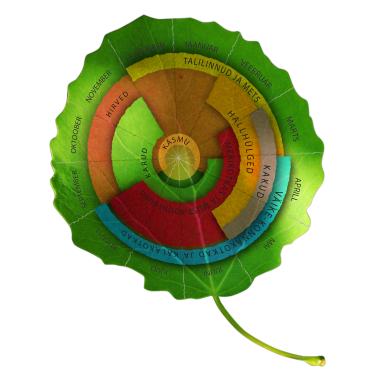What will be the forest of your future does unfortunately not depend on your own wishes only. Nature’s particular traits have to be carefully reckoned with. The soil, the movement of water and the annual changes in water level determine from which tree species a strong and healthy forest will consist. The characteristics of soil and water are vital factors in determining the formation of the underwood vegetation.
But you can decide some things all the same. Let us see what happens if we would like to establish a pine forest on a moderately moist, slightly clayey ground. We encounter problems right in the start. To do it by sowing is not possible, thus the trees must be planted. And at once you have to start fighting the growth of lush grass, soon also protect the young little pines from getting suffocated by birch, alder and ash thickets. Finally the trees in this pine forest will still be rather gnarled, with poor wood qualities, not suitable for construction beams.
If we were to plant ashes and oaks in the same area, the planting costs would be roughly the same as for planting pines, further costs however will disappear. In a couple of decades a thinning must be done, cutting most of the aspens that have grown up there for pulp wood. Some decades further on the remaining aspens should be felled, and it is worthwhile to thin out the ashes too. Oaks grow slowly, ashes grow shoots from the stumps and the future forest would consist of oaks and ashes with a few aspens.
Without human interference there would still be a oak wood here or even an oak-ashes wood but only in several hundred years. At first here would be an alder and ash forest, then a spruce forest, probably with root rot (Heterobasidion) and gradually jays would bring oaks too. Humans may accelerate the process and meanwhile also get some profit from the clearing of aspens and ashes.
Vaccinium pine forest
Another example: Sowing oaks on a sandy dryish slope would provide a result that is no joy to nature or humans. Even after centuries it would be quite meagre with gnarled oaks, puny spruces and birches. Here sowing of a pine forest would be useful. Probably one would have to fight a birch thicket to start with but in the end we would have a nice Vaccinium (lingonberry) pine forest that promising several solid cubic metres of first-class constructions beams.
So we have to know what kind of forest would suit our piece of land. Of course we also have to take in account market demand and our own preferences but it is only possible to a certain extent.
Where nature has decided for a pine forest we may perhaps create a spruce forest or temporarily also a birch forest. If it pays off is a different question
But where by nature an elm-lime-oak mixed forest would grow we would be able to create an aspen, birch or spruce forest but this neither would be particularly to the purpose. If for nothing else than that spruces grown in such a forest are not of a particularly high quality.
The wisest would be to try broadleaf trees and get a suitable income from birch as plywood material and aspen for the cellulose industry. And ash and oak parquet is by no means cheap in the world.
None of us is capable of predicting what the market demand will be in a hundred years. But if we create a healthy and vigorous forest with multiple species for our descendants there will always be something that can be sold profitably.
Cowslips in a bare ash wood. Osmussaar








